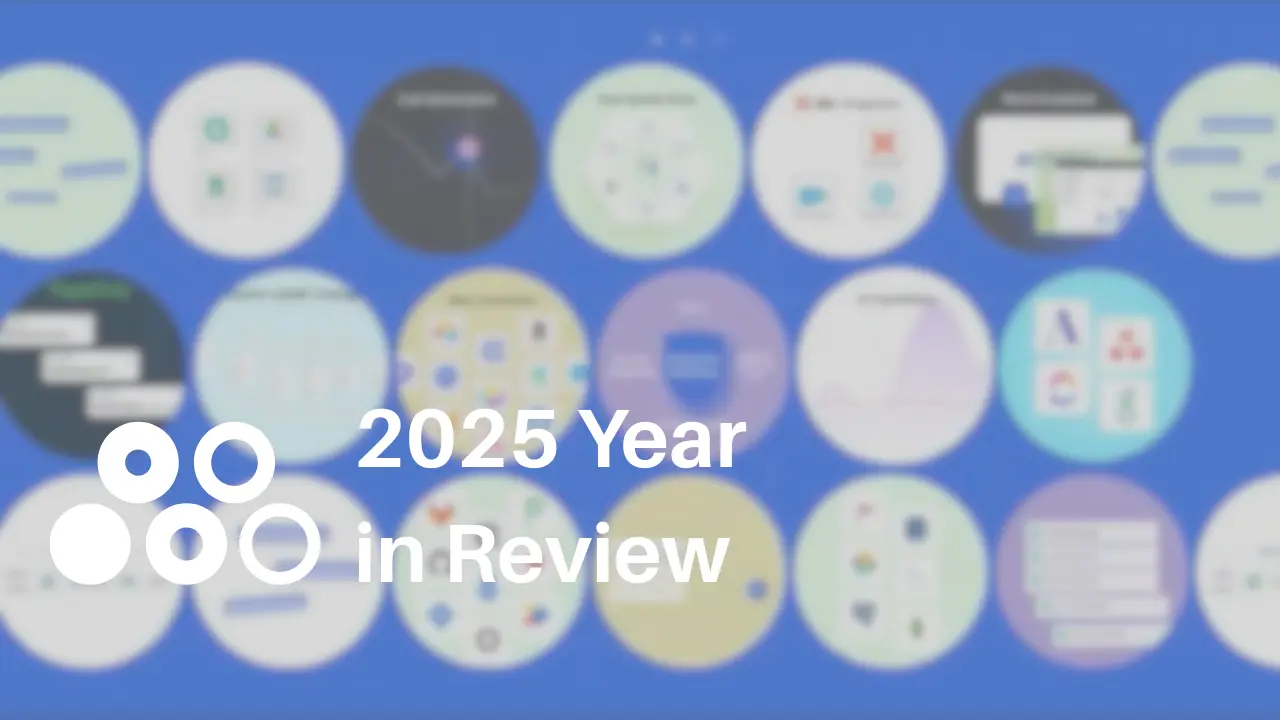The Data Leader's Ramp-Up Guide (Part 1): Your First 30 Days


.png)
The data leader's ramp-up guide (Part 1): your first 30 days
You just got hired as a data leader at a new company. Congrats.
Now the real fun begins. You’re charged with driving insights, unifying data architecture, influencing cross-functional strategy, and delivering measurable business value. Whether your title is Head of Data, Director of Analytics, VP of Data Science, Chief Data Officer, or something else, the early days set the tone. This post is Part 1 of a three-part guide to help you effectively onboard and transition into data leadership at your new organization in your first 90 days.
We’re starting with the first 30 days: focused on listening, learning, and building trust.
First 30 Days: Observe, Listen, Learn
Objectives & Key Driving Questions
- What’s your organization's business model and what are the team dynamics? Understanding the business context and revenue drivers should be known before you start, but you will be able to dive in once you start
- What’s in your current data stack, architecture, and what are your team’s pain points
- How can you build trust quickly with your team and peers
- Can you Identify early opportunities to add value without disrupting what's already working
Keep in mind how you tackle your first 30 days will depend a lot on what you inherit and how the team is setup. Was there an established data function before? Are you coming in to help level up and grow an existing team? Is this a new data organization? Were they reporting into Ops before or an office of CTO/Engineering? The transition plan for a mature data team will differ from building a data function from scratch.
Key actions for new data leaders
You're crawling now. The following are essential data leadership strategies to tackle in your first 30 days.
Learn the business
Your success as a data leader depends on your understanding of the business context. Spend time with stakeholders across functions:
- Schedule 1:1s with product, marketing, sales, customer success, finance, engineering, and operations. Depending on the size of your business, target leaders in the department, and ask them for one to two other recommendations of who to speak with.
- Ask insightful questions: What decisions are you trying to make today? What data sources and metrics do you trust or ignore? What reports do you rely on? How do you measure the success of your function?
- Review existing company materials, investor decks, quarterly OKRs, customer personas, and user flows.
- Map out the customer journey. Identify where data enables decision-making or blocks key moments.
Your goal is to become fluent in how the company makes money, what its strategic priorities are, and where it feels the most friction. Try to trace how data flows through the organization and where it breaks down, both technically and culturally.
Meet your team
Get to know your direct reports and their work, if applicable. Some things to potentially ask in your data team 1:1s:
- What are you proud of?
- What’s one thing you wish was different?
- What tools or workflows feel painful?
- If you were me and coming into this org, what would you focus on in the first 30 days?
- What barriers prevent you from delivering your best work?
Shadow team members if you can. Sit in on stakeholder meetings. Review dashboards and pipelines with them. Seek to understand the why at first, instead of criticize unless they invite you in. Ask them to walk you through a recent request from intake to delivery, what worked and what didn’t?
Pay attention to morale and workload. Is the team burned out? Do they feel empowered to say no? Are they firefighting or focused on scalable systems? Remember that every direct report will be different, and management is about meeting people where they are.
If there are performance or morale issues, avoid making judgments too quickly. Focus on listening. People often respond well when they feel heard early.
Lastly, I would not make any org chart changes in the first 30 days, though it might be awkward. Learn what’s working and what’s not with the structure, and get feedback from all angles, but especially the most senior level people on the team. Effective data team management requires understanding before action.
Understand and map the stack
You need a clear picture of what you’re working with in your data infrastructure assessment.Start documenting:
- Data sources and ingestion/ETL processes (batch vs streaming, tool ownership, observability)
- Data warehouse architecture (schemas, usage patterns, permissions)
- Transformation and modeling tools (dbt? custom SQL scripts? notebooks?)
- AI usage and workflows (Custom LLMs, Iceberg, Enterprise AI tools)
- BI and analytics tools (Looker, Mode, Tableau, Metabase, plus internal tools) - there probably are a lot of ad hoc BI processes that you’ll need to uncover.
- Governance setup (who owns what, how clean is the data, how are metrics defined)
Also: what's missing? What’s too slow? Where does trust break down? Do not make any changes. I repeat, DO NOT MAKE ANY CHANGES. Just observe.
Make sure you walk through a few recent data and analytics tickets or data requests from start to finish, understand how long it takes, what breaks, and who gets frustrated, both on your team and from the broader business. Document your findings as part of your data leadership transition plan.
.png)
Build relationships
Early wins don’t just come from shipping data work. They come from building alignment. Make sure to:
- Meet with your manager weekly or more, if possible; if you’re reporting to a CTO of a larger organization, this might be challenging. Learn how they work and respond and send async updates to get their feedback and thoughts
- Ask how success will be measured for you and your data organization
- Share your listening tour notes with stakeholders and ask for feedback. It shows you’re synthesizing.
- Establish a working agreement with engineering and product counterparts
Invest time in your peer relationships. If you’re in product-led growth, sync with the growth team. If you’re in an enterprise-focused org, get to know your sales and customer success leaders. Learn what keeps them up at night. Understanding stakeholder pain points is crucial for data leadership success.
Look for low-effort, high-impact wins
You don’t need to boil the ocean, but it helps to deliver a small win early, especially if it saves someone time or fixes something annoying. Examples of quick data leadership wins:
- Fixing a broken report used by a customer-facing team
- Unblocking a data quality issue that’s been deprioritized for months
- Automating a manual reporting task
- Implementing simple data quality checks that prevent future incidents
- Creating a clear documentation template for common analytics requests
Just make sure these wins don’t distract from your main job: understanding the system. Ask your team or stakeholders what’s been on the backburner for awhile that could be solved in a few hours. Focus on that.
One area I've always found as a quick win, especially with finance, is cloud cost optimization of data infrastructure. Usually there is an easy way to cut down Databricks or Snowflake spend by 10% using smarter queries and strategies. I usually keep this in my back pocket and will often make a change closer to the end of the 30 days if it’s a quick one.
Common pitfalls for new data leaders
- Don’t jump into reorgs or big tech changes. You don’t know what you don’t know.
- Don’t assume one team’s data challenges are everyone’s challenges
- Don’t criticize what exists. Context matters. Ask why decisions were made before suggesting changes. Lift up the existing team and bring them into key decisions, especially if you’ve been hired over an existing leader. It will go a long way in developing a mutual relationship of trust
- Don’t over-promise. Focus on listening and mapping before committing to delivery.
- Don’t isolate yourself. You’re new: stay visible and vocal.
- Don't immediately push for new tools or platforms without understanding current usage patterns
- Don't neglect the human side of data leadership - building relationships is as important as technical excellence
Deliverables for your first month
By the end of your first month, you should be able to confidently present:
- A 30-day readout to your manager and key stakeholders. Treat it almost like an internal QBR. Invite your #2 on the data team (this one can be controversial) and the heads of other departments. Keep it to 30 minutes and focus on what you want to accomplish and send a pre-read ahead of time.
- A high-level data ecosystem map
- Early themes and recurring pain points
- A short list of potential quick wins
- Hypotheses about where to focus next
This doesn’t need to be a slide deck (though it can be). A simple doc or Notion page is enough if it’s clear and shareable.
Consider including a few examples of impact areas:
- Metric confusion in product analytics
- Manual reporting taking up team bandwidth
- Lack of trust in marketing attribution
Framing your learnings in terms of business problems earns credibility. Make sure to set your plan in the context of business plans and OKRs.
Final thoughts
Your first 30 days as a data leader at a new organization are all about curiosity, humility, and context. You’re laying the foundation for trust. Your team and your peers will be watching how you listen, what you value, and whether you understand the business. Successful data leadership transitions happen when you prioritize learning before action.
Be visible, be helpful, and take great notes. That’s the best way to start strong.
One more tip: write a personal recap of your first 30 days for yourself. Capture what surprised you, what excited you, and what feels unclear. You’ll thank yourself later. Document your data leadership learnings to review as you prepare for your next phase.
Next up in this series: Part 2 – Day 31–60: Designing Your Team’s Strategy.


.svg)





.png)









